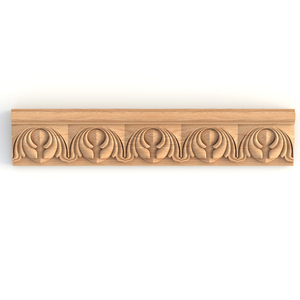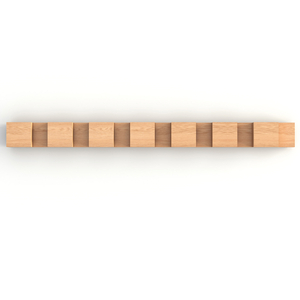Decorative Wooden Mouldings For Wall And Ceiling Decor
A house has four walls and a roof over your head - but it’s the personal touches that create a feeling of real home. Just like a person, a home has its own personality, and the owners express it through many creative means.
One of the ways to add a personalized touch to your home is by decorating the space with decorative mouldings.
Decorative mouldings are a timeless design element that can transform a room, adding character, depth, and a touch of elegance. They come in many styles, ranging from luxuriously opulent to minimalistic and subtle; whatever you desire your interior to look like, there’s always a right solution provided by Carved Decor.
Of course, they’re not just for looks - mouldings are functional pieces of decor, meant to protect your space from wear and tear, too.
BUT WHAT ARE DECORATIVE MOULDINGS?
Mouldings - also can be spelled as “moldings” - are decorative strips of building material, used to trim the lines of walls, ceilings, windows, doors, fireplaces and corners of the walls. They come in a variety of shapes, sizes, and materials, and choice can be varied and overwhelming. Carved and pierced, decorated with egg and dart, dentil, greek key, rope, fluted, lamb’s tongue - all of these motifs are good choices for any architectural design, in different interior styles, such as baroque, art deco, scandinavian, rustic, and many others.
Here on Carved Decor, the mouldings are made of high quality solid hardwood, such as oak and beech. The wood provides warmth, charm, durability; it is eco-friendly, tried and true, and will last for a long time. Created by hand of a masterful artist, each moulding has a subtle touch of personality. Despite being more expensive, its longevity and durability makes it perfect for creating a truly lasting decoration, or for adding potential resale value of your house; it is customizable to fit your preference of finish and color, but is beautiful on its own without it.
Hardwood also provides acoustic and thermal insulation, helping to create a comfortable environment as well as benefiting your heat bills.
HOW TO CHOOSE MOULDING THAT’S RIGHT FOR YOU?
Mouldings are differentiated by their types and uses. Check the list below to see what you can use in your decor and how.
TYPES OF DECORATIVE MOULDINGS:
- Crown moulding: installed where the walls meet the ceiling, protecting it from damage as well as framing the interior. Consider using a more ornate design in formal spaces, such as dining rooms or living areas, while opting for simpler styles in casual spaces like bedrooms or kitchens. Painting the crown moulding the same color as the ceiling can create an illusion of height, while contrasting colors can make a bold statement. For an extra touch of luxury in larger spaces, consider installing crown moulding with a deep profile or layered moulding for a grander effect. Crown moulding also works great for framing architectural elements like built-in bookcases or fireplaces.
- Baseboards: placed at the bottom of walls to cover the joint between the wall and the floor, giving the room a finished look. In contemporary homes, baseboards with clean, sharp lines and a flat profile create a sleek, polished finish. For older homes, taller, more detailed baseboards will help maintain the character of the space. You can choose wider baseboards for a more dramatic effect, especially in rooms with high ceilings, and If you have hardwood floors, a matching wood stain will create a cohesive look, while painted baseboards can add a pop of color.
- Chair rails: positioned about a third of the way up the wall, chair rails protect the walls from furniture and can also be used to create visual interest by separating paint colors or wallpaper, which is especially effective in dining rooms or hallways.
- Casing: made to surround doors and windows, you can use casings for a more substantial look, or to add decorative details such as fluted designs or rosettes. Painting the casing a contrasting color to the wall can make the windows and doors more expressive
- Panel moulding: used to create the illusion of panels on walls, adding texture and depth, as well as your personal touch. You can install it in a grid pattern for a modern look, or opt for more intricate designs for a traditional feel. This technique can work beautifully in entryways, living rooms, or even bedrooms.
TIPS FOR CHOOSING THE RIGHT TYPE OF MOULDING FOR YOU:

- Paint or stain: when choosing moulding finish, consider the overall style of your room. For a rustic or traditional look, go with a natural wood finish that highlights the grain. For a more modern or minimalist feel, opt for a painted finish in a neutral color.
- Consider the durability: If the room is high-traffic or there are differences in humidity, like kitchens or bathrooms, choose mouldings made of durable hardwood like oak, which resists warping and moisture damage.
- Customization: panel moulding offers a creative way to customize your walls. Try different layouts, such as geometric patterns or alternating heights, to add a modern twist. Painted in a bold color, panel mouldings can become a unique focal point in a room.
FREQUENTLY ASKED QUESTIONS:
Q: Can I install wooden mouldings myself, or should I hire a professional?
A: Installation typically involves measuring and cutting the moulding to size, then securing it to the wall with adhesive or nails. While DIY installation is possible for basic moulding projects, intricate designs like crown or panel moulding may require a professional for the best result, especially in rooms with uneven walls or ceilings.
Q: How do I maintain wooden mouldings?
A: Dust mouldings off regularly and wipe with a damp cloth. For natural wood finishes, periodically apply a wood conditioner to maintain their sheen and prevent drying out.
Q: Can I use hardwood mouldings in high-moisture areas?
A: While hardwood can be used in some high-moisture areas, it's generally not recommended for bathrooms or kitchens without proper treatment. Consider using moisture-resistant alternatives in these spaces.
Q: What types of hardwood are commonly used for your mouldings?
A: Common hardwoods used for decorative mouldings are oak and beech.
Oak is dense and robust, and it is known for its prominent grain patterns, giving it a distinctive, textured look, and the wood has rich warm tones of light tan. Due to its density, it can be challenging to work with, but it takes stains and finishes well, enhancing its natural beauty.
Beech has a smoother, more uniform grain and a light, pale color that can range from creamy white to a light tan. It is a little softer than oak, which makes it easier to carve, but you will need to consider the amount of damage it can sustain in high-traffic areas.
Decorative mouldings are a versatile and impactful design element in interior decor. By thoughtfully incorporating them into your spaces, you can create a cohesive and inviting atmosphere. Whether you choose to highlight existing architectural features or create new visual interest, wooden mouldings offer endless possibilities for enhancing your home’s charm and character. If you wish to create a timeless interior design, decorative wooden mouldings are a way to go! Visit our wide collection of wooden mouldings, ranging from crown mouldings to minimalist baseboards, on our website here: Decorative mouldings
















